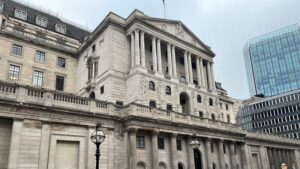The question is what on earth is going on in bond and currency markets now, and what realistically should we expect for the remainder of this year?
UK 10-year gilts have fallen this week, on the back of Bank of England Governor Mark Carney’s comments on a potential rate hike, while yields have climbed.
And as Kames Capital’s David Roberts commented earlier this week, the jury is out as to whether gilts benefit of not from the prospect of Scottish independence – trading political and economic uncertainty against a possibility of delayed rate hikes.
Crazy times
Looking back over the course of the past few weeks, Leigh Himsworth, manager of the City Financial UK Income Opportunities Fund, sees a “crazy” bond market, with yields having actually fallen from 2.60% at the end of July, to 2.38% a month later.
“A significant amount of buying bonds has clearly taken place, and in the context of a very slow yet gradual improvement in economic numbers, one would assume investors should not be fearful of deflation or recession,” he says.
“It is also unlikely that these buyers are not seeking yield, and at 2.38% there are better places to find income. The most obvious answer, that I can see, is that investors are seeking safety, taking some risk off the table.”
We have written about the de-risking trend before but, with less than a week to go before the Scottish vote, Kevin Doran, chief investment officer at Brown Shipley, says investors have actually shown to be complacent on this issue at least.
“It has been striking to see the nonchalance of investors around the uncertainty created by the forthcoming Scottish referendum replaced by a near hysteria, as the polls become increasingly tight, suggesting the vote could indeed go to the wire,” he remarks.
“Despite the uncertainty amongst the public at large, the investment community appears to have taken an unshakable stance that, once the ballots are collected and counted, the result will be a clear and undisputed win for the ‘better together’ camp.”
A new union
With little to stop an independent Scotland continuing to use sterling, Doran speaks of the birth of a new currency union, which could have limited success.
“It must be buttressed with the trinity of political, fiscal and legal union – with banking union also nice to have,” he adds.
“Without these in place, it would be only a matter of time before the Scottish would be forced to either abandon their desire to use sterling or harmonise its political and fiscal decisions with those of the English; which kind of defeats the purpose of the referendum in the first place.”







